Summers and melons are the greatest combos of all time. Having a juicy cool delight is the reason we wait for summers. And cantaloupe is surely everyone’s favorite. This orange-fleshed fruit not only tastes delicious but is beneficial for your health too.
Cantaloupe is enriched with a variety of nutrients such as Vitamin A, Vitamin C, Zinc, Calcium, iron, etc. which proves to be very beneficial for your health when added to your diet. And cantaloupe is almost 85 percent of water.
So, if you are someone who does not remember to drink much water, you must add it to your diet. It is a healthy choice for sure. We can say that a cantaloupe plant is an excellent blend of taste and nutrients.
Isn’t it better to grow cantaloupe in your yard rather than buying it from the supermarket and spending money on it? Plus, you never know if it is natural or loaded with tons of chemicals. But you might think twice before growing it because you might think that it is difficult. That is the reason we are here. We will tell you the easiest way to grow your cantaloupe plant. So, let us get started.
1. Choose the Correct Climate
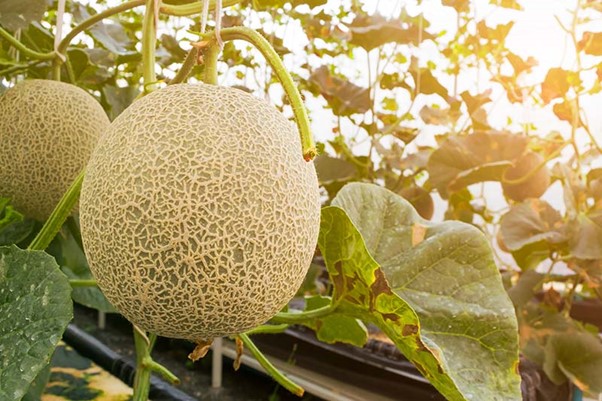
The cantaloupe plant generally grows in warm weather conditions. If you live in warm climatic conditions, plant the seeds after the last frost, during spring and you will get a wonderful harvest. But if you live in comparatively cold climatic conditions, plant your seeds 5 to 6 weeks before the last frost to get a good harvest.
Cantaloupes are highly sensitive to frost; avoid it from harsh cold and cold climatic conditions. Surprisingly, it can tolerate rains and mild droughts.
The air temperature must be about 15°C to 20°C (60°F to 70°F) while planting. Full sun is a must to produce the sweetest cantaloupes. Less sunlight will produce tasteless fruits as sunlight is the major factor that affects sweetness. A minimum of 6 hours of direct sun is considered necessary.
If cantaloupe does not get enough sunlight, it will turn out to be less vigorous. Try to give afternoon sunlight and partial shade. The cantaloupe plant grows well in 5 to 11 hardiness zones.
2. Choose the Correct Soil Type
As our cantaloupe plant will be getting all its nutrients from the soil, the soil to be used must be rich in nutrients. The soil should be fertile, loamy, and well-drained. If loamy soil is not available, sandy soil will also work well. The pH of the soil must be slightly acidic to neutral.
Additionally, the temperature of the soil is equally important. The cantaloupe plant requires a humid environment; hence the essential soil temperature should be above 60 °F (15°C).
3. Prepare Your Soil
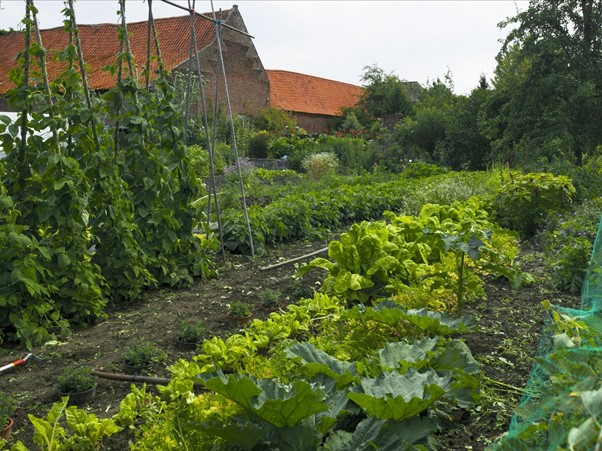
Plowing must be done about 6 to 10 inches deep. Doing so will loosen up the soil sufficiently. Moreover, it will remove all the deformities from the planting area. Add well-decayed manure to the soil first and then layer it up with compost.
You can spread a plastic sheet or any other sheet over the soil (usually known as mulching) before and after sowing the seeds. Doing so will keep the soil warm. Also, it will retain the moisture in the soil and will stifle the growing weed, further protecting your cantaloupe plant.
4. Pick Your Seeds Wisely
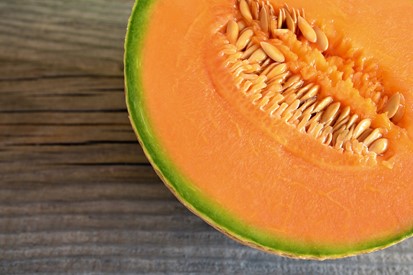
Generally, the cantaloupe plant matures in warm conditions but choosing the seed variety according to your surrounding environment will produce the cantaloupes as sweet as sugar. Here are some varieties for your reference.
Cucumis Melo Var. Cantalupensis (Ball 2076 Hybrid): This variety is said to be the sweetest of all. It matures within 85 days. This hybrid variety resists plant diseases like ‘Alternaria’ and ‘Downey mildew’.
Zena: This variety is best suited for tropical climates. This one matures early as compared to other variants. It takes about 75 days to grow a cantaloupe full of juicy and sugary flesh.

European Cantaloupe: if you are looking for a genuine variety other than some hybrid ones, you should go for this one. It is said to be the original variety of cantaloupe plants.
It was brought to Italy from Asian countries and is said to be the original breed of cantaloupe. To a certain extent, people believe that melons are native to Asia. It has green stripes over the exterior surface and an intricate network of patterns.
The Colossal Cantaloupe (El Gordo): As the name suggests, it is the classiest variety of cantaloupe. This one is worth everything it needs. From size to taste, it has got it all. Largest of all the other variants, it has got the thickest flesh and its unique shape. With a little bit of care, you can get a melon of about 30 pounds! Honestly, we find this one the most fascinating variety of all. It is also known as the melon master.
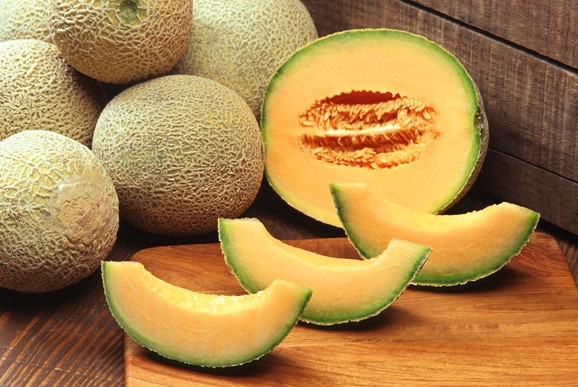
Planters Jumbo: It is a great variety with great taste. It will grow long vines and requires about 85 days to mature. It is highly resistant to powdery mildew.
Mini Melons: They are as small as your fist. Yes! You read that right. A cantaloupe variety is as small as your fist! Strange right? This one is for you if you think you cannot finish one melon at a time. Well with this one, you will not even know, and you might have gulped one serving at a time and would crave for one more. Then one more and more. This goes on. And you can grow them in pots too. But go for Larin pots. Do not go on the size, they are packed with many nutrients.

5. Location
Once you are done with the choice of seeds, let us move towards how and where to grow your cantaloupe plant. We would recommend growing two to three seeds in a different pot initially. This might be a good idea if you live in colder regions. Doing so will make it easier for you to take the extra care it needs during growing periods.
Prepare the soil in a pot with added nutrients and moisture. Put the seeds carefully and deep inside (not too deep). Once the seeds break open to grow into a plant and mature enough to have some leaves, transfer the plants into the garden where you prepared the planting bed initially. But you will have to take some extra care while doing it, as the root system of the cantaloupe plant detests disturbance around them.
6. Plant Them Outdoors
Once you transfer the plants to the planting bed, a great deal starts here. Make sure you plant each sapling 30 to 40 inches apart. Avoid crowding of the saplings or else they may fall short of space. Give them enough room to grow well.
As the plant develops and stars growing other floral parts, remove the weaker buds and stems off your plant. This will enhance the growth of stronger melons.
You can use various techniques to protect and grow your cantaloupe plant. One such method is trellising. It includes growing the trellis or vines of the plant on fencing for better support.
7. Remove the Weeds
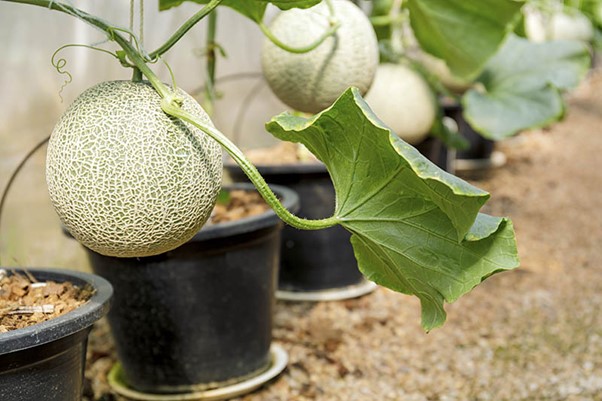
Weeding is an important step here. Remove the weeds as soon as they appear. Otherwise, they will eat up all the nutrients essential for the harvest, causing a deficiency of them for your cantaloupe plant.
Make sure you do it cautiously as you do not want to disturb the fragile network of roots within the planting site. In addition to it, you may get confused between the weeds and actual plant trellis, so you would want to do it heedfully. You can mark your plants before the growth of weed to avoid further confusion and difficulty.
8. Fertilize, Fertilize, Fertilize
Protection against pests and diseases can be a tricky job. Do not worry. We are here to help. Try using dilute liquid copper sprays and organic insecticidal soaps to make your cantaloupe plant free from mildews. It will keep bugs away too.
Moderate amounts of nitrogen, potassium, and phosphorous fertilizers can do their wonders too. Avoid prolonged use of these fertilizers. Add manure and compost periodically if you think the plants are growing slowly. Use fungicides as per requirement.
Protect the cantaloupe plant during the flowering period or else the wasted blossoms may not bear fruits, leaving you and your plate disappointed!
9. Water It Carefully
Cantaloupe necessitates water quantities in abundance. Initially, they require plenty of water, but as the blossoms appear, they prefer dry and warm weather. Water your cantaloupe plants every day in the morning or afternoon as per your convenience. Reduce it to four to five times per week later. But over-watering it may make the soil damp causing problems later.
You can use a melon cradle after the formation of fruits to avoid contact with the moist soil and to avoid soil-borne diseases.
Now there is one thing to pay attention to. Watering the leaves will cause many diseases like powdery mildew. It will also give an invitation to bugs and insects which will damage your cantaloupe plant. Water the roots deeply but ‘NOT THE LEAVES’.
Once the fruits grow on the stem and start to mature a little bit, try watering it as little as possible, but do not cut back on water totally. This will concentrate the sugary compounds in the flesh and will give you the cantaloupes that will just melt away as soon as you put them in your mouth.
10. Growth and Pollination of Flowers
The cantaloupe plant is unisexual in nature. It means they produce distinct male and female flowers. Trying to identify them will surely put you in a dilemma. Here is a tip. The female ones have a tiny bulge under the flower and the males have a straight stem. Also, look for blooms that appear earlier. They are mostly male blossoms. They appear about one to two weeks before the female ones.
If your garden is full of bees buzzing around, your cantaloupes will grow wonderfully as pollination will take place naturally and in a systematic way. But if not, the cantaloupe plant may produce withered fruits. Do not worry. We have a solution for that too. Remove some pollen grains from male flowers and place them on stigma artificially. This trick will work well for pollinating your blooms.
11. Do Not Be in a Hurry

We know it is irresistible when it comes to having melons. But if want your melon to be the sweetest, you must sacrifice your cravings for a little longer.
A cantaloupe plant requires about 75 to 90 days for maturing and bearing fruits from flowers, depending on the variety. So do not rush to remove the fruit as soon as it appears on the vines. Wait until the fruit turns yellow and the stem darkens in color (dark brown). Its texture will appear soft too when it is ripe.
Aroma too plays a role when it comes to knowing whether the fruit is ripe or not. When your cantaloupe starts smelling somewhat musky sweet and fresh, you know your cantaloupe is ready to eat. Also, when you try to remove the cantaloupe from the stem, make sure it comes off easily. If it does not slip right away in your hands, it still needs a little amount of time.
At the same time, do not let the fruit fall off on its own, because it is a sign of over-ripe fruit. Once you feel that it is ready from the inside, grab a plate and enjoy!
Some Extra Tips
- Avoid pinching and pruning of shoots and stems. More the leaves, the sweeter the plant is.
- Longer vines are produced when the cantaloupe plant matures. You can grow them vertically on a ladder or fencing. It gives the cantaloupe plant more space to grow.
With this, we conclude our tips for growing the cantaloupe plant. Using them, you can grow the sweetest variety of cantaloupes. Enjoy this juicy and sugary treat during bright and sunny days. It is sure to engage your tastebuds. Thank you!


